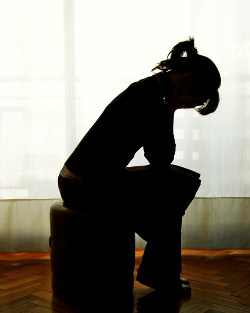Temple faculty, staff shine a light on teen suicide
Philadelphia has almost twice the national average of suicide attempts among high school students.
| At 14 years old, Shreeta had been in and out of group homes for most of her life. In November of 2001, she got tired of the constant moving around and ran away. One night while living on the street, she was attacked and ended up in the hospital. “I was in the hospital for, it had to be about four days. No one came to see me, no one called me,” she said. “It felt like no one cared enough to come see me in the hospital. No one even knew what happened to me. For all they knew, I could have been dead. That’s when it felt like the end for me.” Home from the hospital, Shreeta walked to a nearby bridge and stood on the side, deciding whether she should jump. “People think about suicide a lot,” she said. “You may not realize it because no one talks about it, but it’s a common thought that happens a lot.” |
 Photo: stock.xchng
Temple researchers held an open forum on Dec. 10 to address Philadelphia’s staggering teen suicide rates, which stand at twice the national average. While the exact cause of the disparity isn’t known, health researchers say depression coupled with drug and alcohol abuse plays a part.
|
| And in Philadelphia, it’s more common than most people think. The rate of suicide attempts among public high school students in the city is almost twice the national average – 12.9 percent versus 6.9 percent. Particularly troubling are the rates of suicide attempts among African American youth (12.1 percent), which can be up to twice the rate of those in comparable cities such as New York (6.5 percent), Baltimore (7.8 percent) or Detroit (9.9 percent).
While researchers have yet to determine the definitive causes for the disparity in rates of attempted suicide, existing research can offer some clues, according to Brian P. Daly, an assistant professor of public health at Temple’s College of Health Professions and Social Work. “There is data to suggest that for inner-city African-American teens in general, suicidal thoughts coupled with alcohol and drug abuse and depression are associated with suicide attempts,” said Daly, who also directs the Philadelphia Youth Risk Behavior Survey, a study of risky behaviors among high school age adolescents in Philadelphia that could be harmful to their health. While Temple researchers are working to answer the most important question of why, they’re also looking at how — as in, how can social workers and other professionals combat these staggering rates? On Dec. 10, faculty and students from the College of Health Professions and Social Work, staff members from the Center for Social Policy and Community Development (CSPCD), and members of the surrounding community convened at Ritter Hall Annex to discuss this very topic. “This is an issue that needs awareness, and needs to be discussed,” said Jonathan Singer, an assistant professor at the School of Social Work. “Social workers and others who work closely with this high risk group need to discuss what we’re offering to these kids and what we need to do differently.” At the event, Singer, along with Harold Brooks of CSPCD, led a discussion about what can be done to prevent and intervene with suicidal youth in Philadelphia. “There are important questions that need to be answered as you work with these kids,” said Brooks. “What can you do? What resources do you need as you continue to work with kids who are at risk?” Brooks is the educational coordinator for the Achieving Independence Center, a project run out of the CSPCD and sponsored by the Philadelphia Department of Human Services that assists and supports youth in foster care, as they transition to adulthood. He worked with several of these young people on a DVD called “ACT Now,” the first on suicide prevention to be geared toward urban and minority youth. The movie, which was screened at the event, tells the story of seven North Philadelphia teens, including Shreeta, who attempted to take their own lives or know someone who did. “We let the cameras roll, and the kids talked about their feelings, their experience, and offered their perspective to help others in a similar experience,” said Brooks. “By offering stories they can relate to, our hope is that this will help any teenager in an urban environment experiencing trauma.” Fortunately, Shreeta decided not to jump. Instead, she took part in the ACT Now video, to let others know about the promise of listening when someone has a problem. “Even if it’s just an ear to listen, or just a simple compliment, it’s your job to make sure that person is OK,” she said. “And if we can do that, I think the suicide rate would go down a lot.” |
|